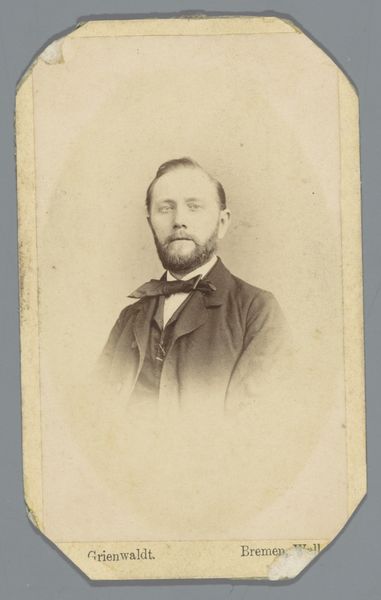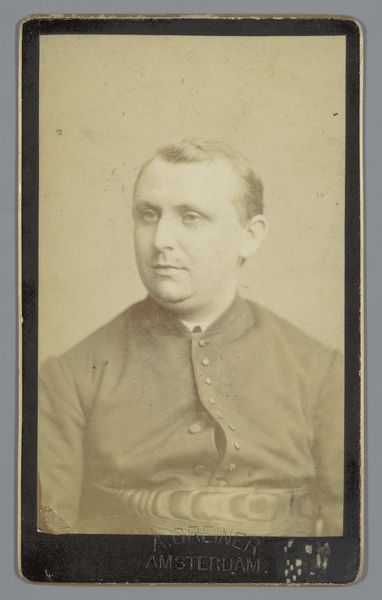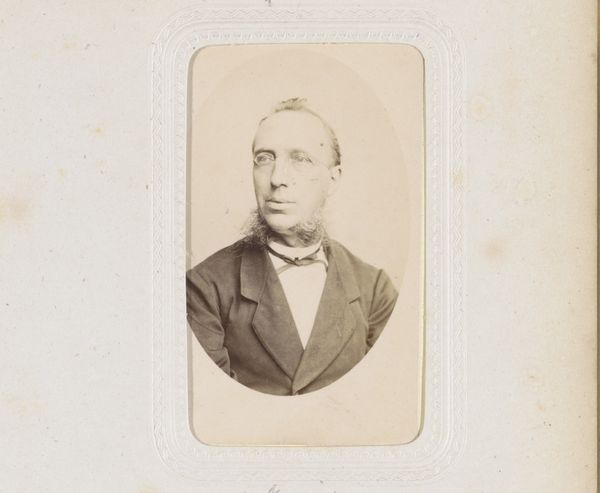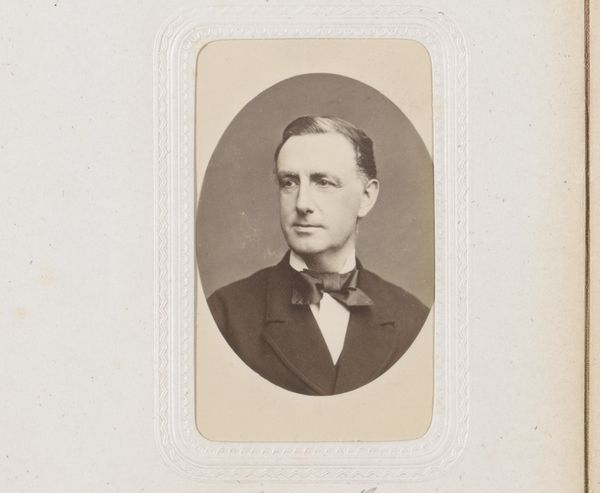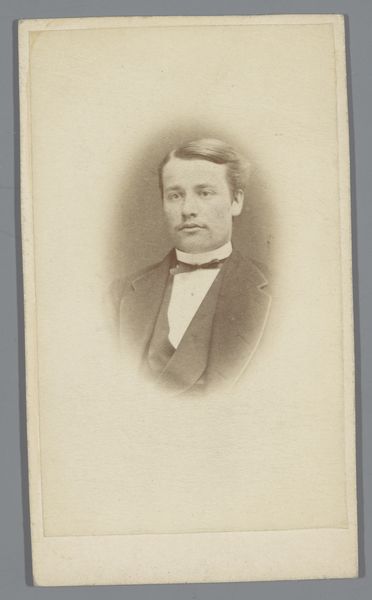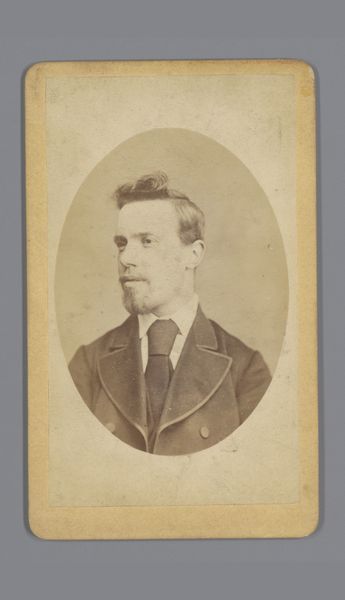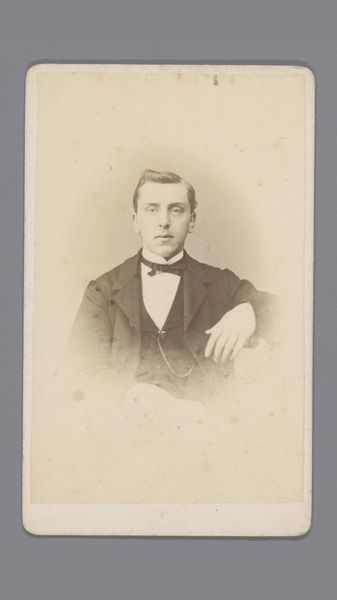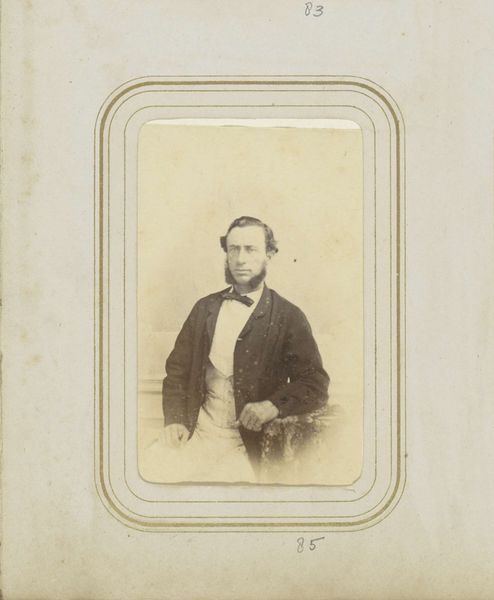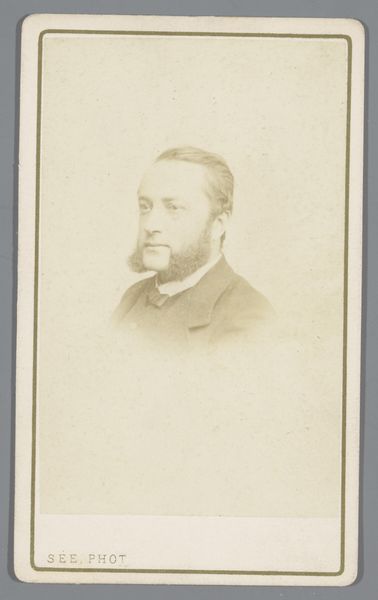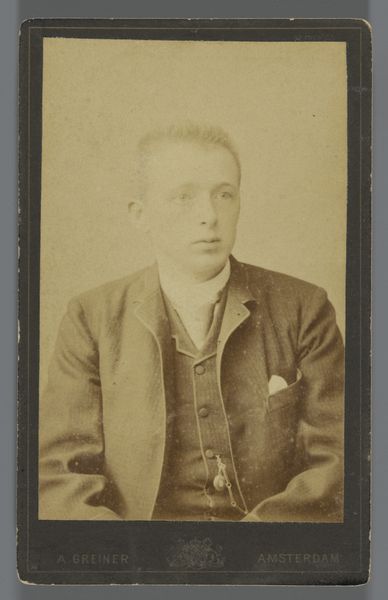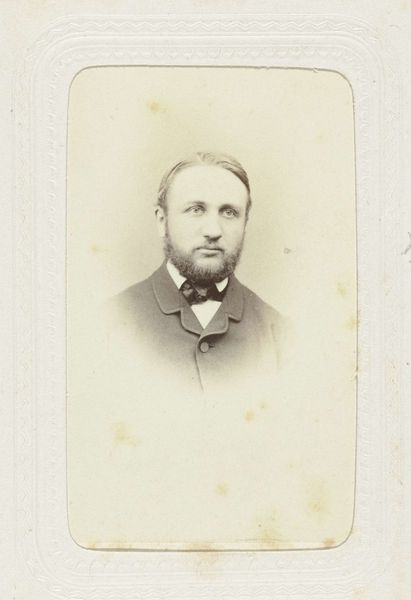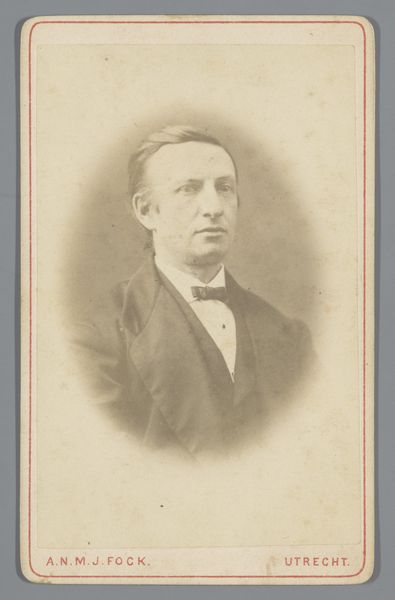
photography
#
portrait
#
photography
#
historical photography
#
realism
Dimensions: height 138 mm, width 98 mm
Copyright: Rijks Museum: Open Domain
Editor: We are looking at "Portret van een man met bakkebaarden en bril," or "Portrait of a man with sideburns and glasses." This photograph, dating from 1870 to 1900, appears to be made using historical photography techniques. It’s really striking, almost austere. I'm curious, what strikes you about it? Curator: Well, from a materialist perspective, it's crucial to consider the physical making of this object. We should consider this photograph as a physical artifact, and examine the means of production that enabled its creation during that period. Do you know what type of photographic print this might be? Editor: It's listed as photography in the metadata, I presume some process related to realism because it reflects a candid snapshot of someone’s face and attire. Curator: Precisely. We could then discuss the chemical processes, the availability and cost of materials, and the labor involved in producing this single image. How would such factors impact its meaning? Editor: Well, limiting the production due to its associated labor, it certainly becomes more valuable as both an art object and also maybe for its utility, it captures a person who needed to be remembered. Is the material aspect intrinsically valuable in old photographs? Curator: Not only that, but think about how photography democratized portraiture. Suddenly, representation wasn't limited to the wealthy who could afford painted portraits. But access to the materials and technology still dictated who was being represented, don't you agree? Editor: I see what you mean! Considering who is *behind* the camera versus who is *in front of* the camera tells its own historical story! Thank you so much, this was fascinating. Curator: It certainly underlines how vital it is to understand a work of art's physical context, its materiality, and its making! A useful starting point for future analyses.
Comments
No comments
Be the first to comment and join the conversation on the ultimate creative platform.
